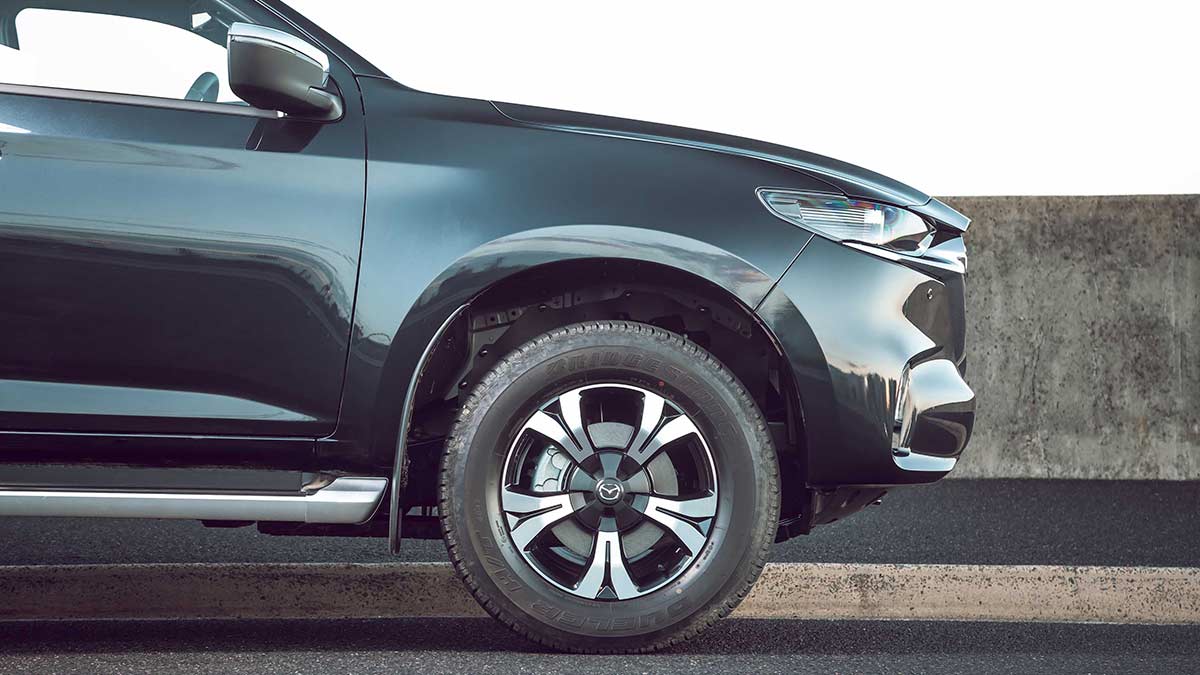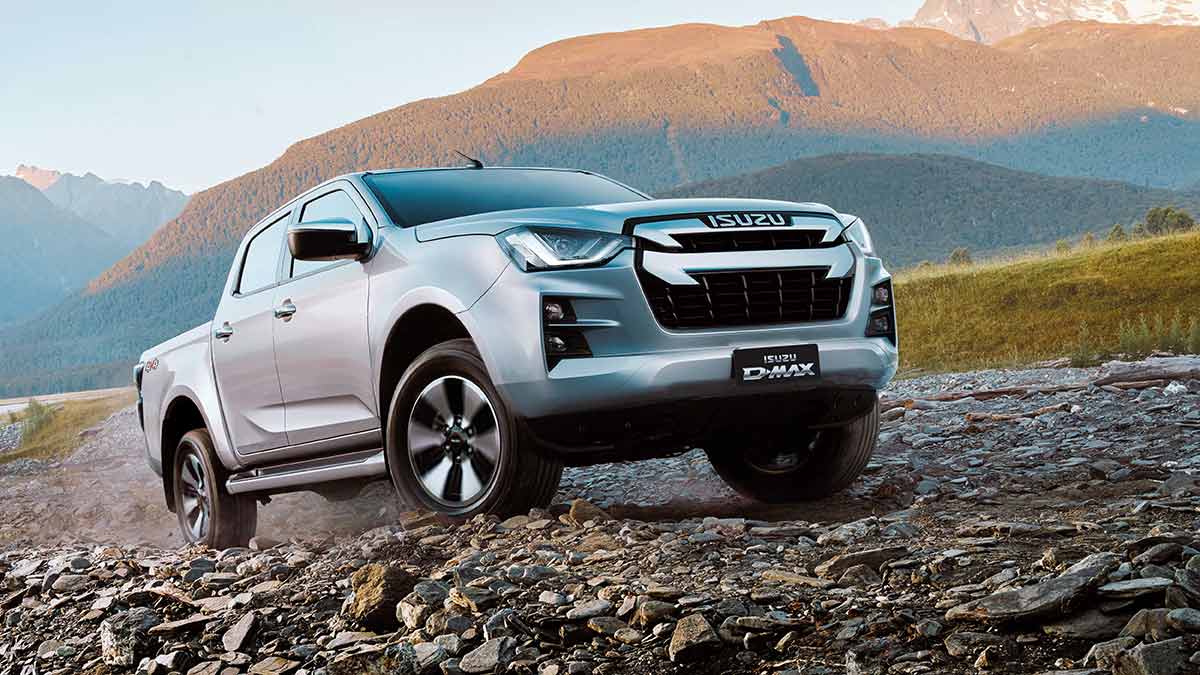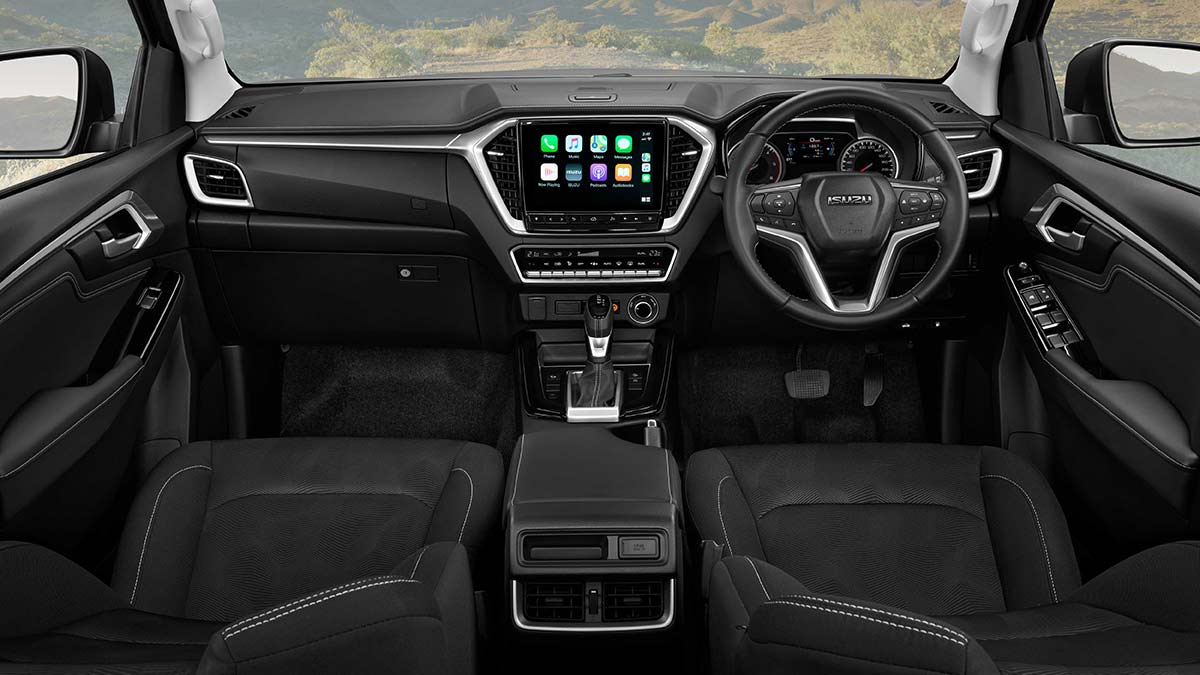The Foton Tunland joins Australia's dual-cab ute market as an affordable mild-hybrid diesel under $50,000, offering strong capability against tough competition.
Isuzu D-Max and Mazda BT-50 2021 road test review

These one-tonne utes are twins under the skin, but which is for you?
Model sharing is when manufacturers share vehicle development with another auto maker, rather than developing two models separately from scratch. While there are plenty of examples going back decades – does anyone remember the 1989 Toyota Lexcen, which was just a rebadged Holden Commodore? – it’s becoming more common in the one-tonne pick-up segment.
Successful examples include the previous-generation Isuzu D-Max and Holden Colorado, as well as the Australian-developed Ford Ranger and Mazda BT-50 twins. Ford is now leading the development of the next Ranger alongside the next Volkswagen Amarok – both of which should see the light of day next year. Meanwhile, Mazda teamed up with fellow Japanese brand Isuzu, which developed the all-new Isuzu D-Max and Mazda BT-50, launched within a couple of months of each other last year.
Isuzu has made big changes to the D-Max, improving refinement, beefing up the engine and enhancing in-car tech and safety features. The Isuzu and the Mazda have unique exterior designs to differentiate them and minor differences to the model grades and specifications, but they are identical under the skin. Isuzu has evolved the butch look of the previous D-Max, while the BT-50 adopts Mazda’s cleaner, softer design language.
We drove similarly specified variants of each ute within weeks of each other and have compared them here to determine which twin is the top pick.
Thumbs up
Impressive standard safety package, improved powertrain, comfortable ride quality and modern, refined cabin.
Thumbs down
Infotainment still lags behind, overly light steering feel, odd placement of push-out dash cupholders.
Price and positioning
Both the D-Max and BT-50 are offered in single-cab, space-cab and dual-cab body styles. The D-Max is available in SX, LS-U, LS-M and new range-topping X-Terrain model grades. Depending on the body style and model grade, buyers have the choice of 4x2 or 4x4, six-speed manual or six-speed automatic and cab-chassis or pick-up. Pricing ranges from $33,200 before on-road costs to $63,900 for the rugged X-Terrain. Prices have increased between $1900 and up to $6000 over the superseded model, depending on the variant. The X-Terrain is more than $8000 more than the previous LS-T flagship, but it comes with more gear and is positioned as a rival for the popular Ford Ranger Wildtrak.
Mazda is offering the single and space cab in base XT cab chassis guise only, with a choice of 4x2 and 4x4, manual and auto. Dual-cab model grades include the XT, XTR and GT with the XTR and GT only available in 4x4 pick-up guise. Pricing ranges from $36,550 to $59,990.
We sampled the mid-range D-Max LS-U and BT-50 XTR, both automatic and 4x4, priced at $57,900 and $57,210 respectively – just $690 difference.
Matching equipment for both brands includes a 9.0-inch infotainment touchscreen with voice recognition, sat-nav, DAB+ digital radio, Apple CarPlay/Android Auto, dual-zone air conditioning with rear air vents, leather-wrapped steering wheel and gear knob, carpet floor, 18-inch alloy wheels, power-adjustable door mirrors, auto-dimming interior rear-view mirror, LED fog lamps, rear USB charging port and more.
Both models line up against dual cabs like the Ford Ranger XLT ($59,440) and Toyota HiLux SR5 ($58,420). Being the newer kids on the black, the features are bang up to date and the standard features list is very healthy compared with rivals.
Safety first
Improving safety was a priority during development, and Isuzu engineered some of the driver-assist systems to better suit Australian conditions. Standard across the D-Max range is Isuzu’s driver-assistance system using a 3D stereo camera to detect and measure distance, size, velocity and depth of vehicles, pedestrians, cyclists and other potential obstacles. Both the D-Max and BT-50 come with autonomous emergency braking with turn assist and forward-collision warning, adaptive cruise control with stop and go functionality, traffic-sign recognition, driver-attention assist and more.
The guided steering function of the lane-keeping aid works well in both vehicles, although the automatic steering inputs are slightly jolty. But it’s a solid system and Isuzu and Mazda should be commended for including such advanced systems as standard on all variants.
The D-Max and BT-50 both achieved a five-star ANCAP safety rating, with identical scores across most testing categories, except vulnerable road-user protection which saw the D-Max pipping the BT-50, 69 per cent to 67.
The inside story
Very little sets the two utes apart inside beyond their branded steering-wheel centres. The completely overhauled cabin marks a huge leap forward compared with the rough old D-Max. More soft-touch materials and splashes of brushed chrome help elevate the cabin from a basic workhorse and the overall design of the dash is neat and uncomplicated. The BT-50 also represents a big improvement inside over the old Ranger-based model.
While comfort levels have increased with the new twin models, there’s still a robustness to the cabin that’s essential given it will be used by many as a work vehicle or for off-road adventures.
There are plenty of storage options up front, including a large glovebox, centre console storage, a coin and card box on the driver’s side, large door storage pockets and an extra glovebox on top of the dash. Additional push-out cupholders hidden in the dash are a neat touch, but they sit directly under the air-con vents which blows air directly on to the cups. Better make it an iced latte then.
The front cloth seats in both utes offer excellent bolstering and side support, so much so that they look and feel like sports seats from a more premium SUV.
Isuzu has improved the infotainment system for the new model and in LS-U guise it’s housed in a nine-inch central display screen. It has a clunky menu layout and the graphics are a bit low rent, but it’s functional. Apple CarPlay dropped out several times in both models.
Rear-seat passengers will find loads of head room and decent knee room, but minimal toe room. The seats have a flat bottom but some light bolstering for the upper body. The backrest folds down, but you have to take the headrests off to fold it flat. The seat bottom flips up to load large items across the floor, but there’s no under-seat storage. There are, however, USB ports, knee-level air vents, bottle storage, a fold-down central armrest with cupholders, rear map pockets and a handy hook on the passenger side seatback that can take four kilos.
On the road
These sorts of utes are known for their towing capacity, and the new versions can tow up to 3500 kilograms, equalling the best in the one-tonne pick-up segment. Payload for the tub differs slightly between the two. The Mazda can take 1070 kilograms in XTR auto guise, while the D-Max LS-U auto can carry 1055 kilograms.
Isuzu heavily revised its 3.0-litre four-cylinder turbo-diesel engine, increasing outputs by 10kW/20Nm to 140kW of power and 450Nm of torque. While this is a boost for the D-Max, it represents a drop compared with the old BT-50 that used the 3.2-litre five-cylinder 147kW/470Nm turbo diesel still used in the Ford Ranger.
Still, the updated engine offers plenty of torque when you need it and while it’s not as responsive as a Volkswagen Amarok V6, it’s gutsy when pushed and shines higher up the rev range. The six-speed automatic tends to hold third gear, but it gets the job done.
One criticism of the old D-Max was the heavily weighted steering that added to the agricultural feel of the ute, and Isuzu has addressed this by lightening the steering feel considerably, but now it feels too light.
Isuzu engineered the suspension tune to Australian conditions, and as a result, ride and handling characteristics have improved considerably. The ride still feels slightly busy when driving both utes unladen, but it’s stable and comfortable, with very little lateral movement. Speed bumps and deep potholes barely register and both utes proved their off-road chops on a lengthy section of pockmarked, unsealed road.
Another big focus for engineers was to improve noise, vibration and harshness levels. Given the tractor-like nature of the old D-Max, the new version – and the BT-50 – are light years ahead of their previous incarnations. The engine still rattles at idle, but the cabin is much quieter than before.
The official combined-cycle fuel consumption figure for 4x4 dual cab auto versions of the Isuzu and Mazda is 8.0 litres per 100 kilometres. We recorded 9.5L/100km in the D-Max and 11.6L in the BT-50 after a week of driving. The difference in the two real-world figures is down to the type of driving, and how many kilometres driven, rather than any discrepancy in fuel use.
And the winner is…
So which one of the twin utes comes out on top? It’s impossible to pick one over the other, given they are identical in all but design. There’s a level of sophistication to the D-Max that was sorely missing from its predecessor. The impressive safety specification and dramatic improvement to in-car comfort puts it right up there with the best in class now.
It’s harder to compare the new BT-50 with the old one, given they’re based on completely different vehicles. And while the 3.0L engine isn’t as powerful as the old five-pot unit, it’s still a much more compelling package than the old BT-50, thanks to the massive improvements Isuzu has made during development.
In the end, it will come down to which design, and which brand, you prefer. But there is definitely no loser in this test.
The verdict
The identical D-Max and BT-50 are undoubtedly better than the models they replace and now compete at the very top of the ute segment.
|
Price |
List price: $57,900 before on-road costs. Price as tested: $57,900 before on-road costs. Model range: $33,200 to $63,900 before on-road costs. |
List price: $57,210 before on-road costs. Price as tested: $57,210 before on-road costs. Model range: $36,550 to $59,990 before on-road costs. |
|---|---|---|
|
Drivetrain |
3.0-litre four-cylinder turbo-diesel engine, six-speed automatic transmission, four-wheel drive. Power: 140kW@3600rpm. Torque: 450Nm@1600rpm. Wheels: 265/60 R18. |
3.0-litre four-cylinder turbo-diesel engine, six-speed automatic transmission, four-wheel drive. Power: 140kW@3600rpm. Torque: 450Nm@1600rpm. Wheels: 265/60 R18. |
|
Fuel |
Diesel, 76-litre tank. Consumption: 8.0L/100km (government test), 9.5L/100km (RACV test). Emissions: 207g/km CO2. |
Diesel, 76-litre tank. Consumption: 8.0L/100km (government test), 11.6L/100km (RACV test). Emissions: 207g/km CO2. |
|
Standard safety |
Five-star ANCAP rating, reversing camera, attention assist, autonomous emergency braking, blind-spot monitor, lane-departure warning and prevention, lane-keep assist, rear cross-traffic alert, roll-over protection and secondary collision reduction. |
Five-star ANCAP rating, reversing camera, attention assist, autonomous emergency braking, blind-spot monitor, lane-departure warning and prevention, lane-keep assist, rear cross-traffic alert, roll-over protection and secondary collision reduction. |
|
Standard features |
Dual-zone climate-control air-conditioning with rear vents, auto-dimming interior mirror, nine-inch full-colour infotainment touchscreen with satellite navigation, DAB+ digital radio, Apple CarPlay/Android Auto, keyless entry, black cloth seat trim. |
Dual-zone climate-control air-conditioning with rear vents, auto-dimming interior mirror, nine-inch full-colour infotainment touchscreen with satellite navigation, DAB+ digital radio, Apple CarPlay/Android Auto, keyless entry, black cloth seat trim. |
|
Warranty/Servicing |
Six-year/150,000-kilometre warranty. Seven years roadside assist. Seven years capped-price servicing program. Service intervals every 12 months/15,000 kilometres. |
Five-year/unlimited-kilometre warranty with complimentary roadside assist. Seven years capped-price servicing program. Service intervals every 12 months/15,000 kilometres. |










